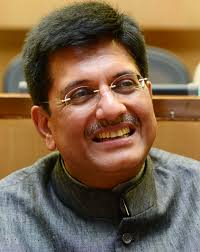India is likely to occupy number one position as the largest growth market for energy over the next 20 years and this depends upon the changes in policy, technology and the pace of the economy.The global energy landscape is undergoing dramatic changes due to rising demand, increasing supply, and rapid economic growth by the fast- growing emerging markets. Natural gas is expected to grow faster than oil or coal, helped by the rapid growth of liquefied natural gas across the globe.
The overall demand for energy is set to expand as the world economy is expected to almost double over the next 20 years but the expected growth in the global economy is driven by emerging economies, with India and China accounting for around half of the increase because of an increasing prosperity with more than two billion people lifted from low incomes thus increasing the purchasing capacity.
India’s energy consumption growth at 4.2 per cent annually will be the fastest among all major economies by 2035 and even after an increase in production; the country will remain import-dependent for its energy needs, according to a BP Statistical Review of World Energy 2017.
In India, energy consumption in power generation will more than double (+133 per cent), while energy in transport may grow by 5.8 percent per year with oil remaining the dominant fuel source in 2035.
Oil consumption in the country will rise to 9.2 million barrels per day (bpd) in 2035 from 4.1 million bpd in 2015. Natural gas consumption is expected to jump to 12.8 billion cubic feet per day (bcfd) from 4.9 bcfd, while coal consumption is projected to more than double to 833 million tonnes.
As for energy sources, the demand for gas is expected to expand by 162 per cent, followed by oil (+120 per cent) and coal (+105 per cent). The demand for renewable energy will soar by 699 per cent, while those for nuclear will go up by 317 per cent and hydro by 97 per cent.
The global demand for energy is expected to increase by around 30 per cent between 2015 and 2035, an average growth of 1.3 per cent per year. However, this growth in energy demand is significantly lower than the 3.4 per cent per-year rise expected in global GDP, reflecting an improved energy efficiency driven by technological improvements and environmental concerns.
The review anticipates China to remain the world’s largest market for coal, accounting for nearly half of the global coal consumption in 2035. However, in terms of growth, India is likely to be the largest market, with its share of the world’s coal demand doubling from around 10 per cent in 2015 to 20 per cent in 2035. Over two-thirds of India’s increased demand for coal is projected to feed into the power sector.
Also, Asia would continue to remain the largest destination for the liquefied natural gas (LNG). China, India and other Asian countries all increase their demand for LNG, helping gas to grow faster than either oil or coal in each of these economies.
The Asia-Pacific has driven global economic growth, leading to reliance on energy imports and producing significant environmental effects as a result of increased energy use. The perfect storm of rising demand, increasing supply, and rapid economic growth has shaped the current global energy market as we see it in early 2015 with technology innovation spurring greater options for consumers and buyers. While Qatar is New Delhi’s LNG supplier, Saudi Arabia remains one of the largest source of crude for the energy-hungry Indian economy – demonstrating the need for deft diplomacy by India’s leadership.





